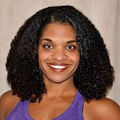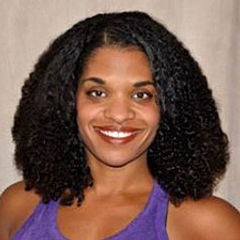Regular physical activity is key to achieving optimal health at any age. May is Women’s Health Month. Read on to learn how exercise impacts women’s health during each stage of life.
Adolescence
Goal: Focus on enjoyable physical activities to boost mood and confidence.
Only 27% of high school students get the recommended 60 minutes of daily physical activity on all 7 days of the week (Centers for Disease Control and Prevention, 2018). Apart from improving physical fitness, regular physical activity can positively impact emotional health in adolescents. Anxiety disorders affect more than 40 million Americans each year and are most prevalent among 13 to 17 year-olds (Merikangas et al., 2010). While anxiety disorders occur in both genders, girls are disproportionality impacted during the teenage years. Regular physical activity enhances self-esteem, improves mood and promotes healthy body image in adolescent females. Parents and caregivers of teenage girls should encourage activities that are enjoyable and that are self-selected. Furthermore, physical activity in this stage of life should emphasize wellness and healthy lifestyle behaviors over weight loss.
Fitness in Your 20s
Goal: Focus on developing healthy habits to lower your risk for cardiovascular disease later in life.
The young adult years are a time for both personal and professional growth. The demands of perhaps finishing a degree, establishing a career and managing evolving personal relationships can make it difficult to eat well and exercise regularly. Thinking about long-term health is not necessarily at the top of the to-do list for the average twenty-something, but researchers at Northwestern University believe it should be. The Coronary Artery Risk Development in Young Adults (CARDIA) study followed more than 3,000 subjects. Participants ranged in age from 18 to 30 years old when the study began. Researchers found that participants who had high physical-activity scores combined with other positive health behaviors, such as no to moderate alcohol consumption, a healthy diet and never smoking, had significantly lower cardiovascular disease risk profiles by middle age (Liu et al., 2012).
Fitness in Your 30s
Goal: Focus on regular physical activity to promote bone health.
Osteoporosis is a disease characterized by low bone mass and is a leading cause of bone fractures in women over the age of 50 (National Institute of Health for Osteoporosis and Related Bone Diseases National Resource Center, 2015). While osteoporosis is typically not diagnosed until the fifth or sixth decade of life, bone loss and disease progression begins much sooner. Bone mass peaks at around age 30; at this age, bone resorption—the process of bone demineralization—begins to exceed new bone formation. Over time, this leads to bone loss. Women in their 30s should include physical activities that promote bone health. When it comes to exercise selection, load is paramount in building and maintaining healthy bones. Here are a few tips for selecting the right types of exercise:
- Include resistance-training workouts in your exercise program. Heavier weights, rather than lighter, are better for bone health.
- When selecting aerobic activities, be sure to include weight-bearing activities such as stair climbing and dancing several days per week. Low-impact activities such as indoor cycling and swimming are great for improving fitness, but they will not help you to build stronger bones to the same extent as weight-bearing exercise. If possible, include high-impact aerobic exercises such as jogging and tennis.
- Apply the principle of progressive overload for further protection. Overtime, increase the load and intensity of your workouts to continue to improve both bone health and muscular fitness.
Fitness in Your 40s
Goal: Avoid age-related muscle loss by performing resistance exercise.
Sarcopenia—the loss of muscle mass and strength—begins around age 40 and declines at a rate of 5 pounds per decade. Decreased muscle mass can reduce functional capacity, lead to unwanted weight gain and often precipitates muscle imbalances associated with lower-back pain and other musculoskeletal anomalies. Fortunately, you are not powerless in the fight to prevent muscle loss. A cross-sectional study examined recreational athletes between the ages of 40 and 81 years who trained four to five days per week. Researchers found no significant decrease in strength with age and no loss in total muscle mass (Wroblewski et al., 2011). This study was among the first to demonstrate that losses in muscle mass previously attributed to aging may actually be the result of lack of use. It appears that the old adage—use it or lose it—is true in this case.
Fitness in Your 50s
Goal: Exercise to maintain optimal health through menopause.
Cardiovascular disease is the leading cause of death and disability for both men and women in the United States (Benjamin, 2017). However, after menopause a woman’s risk for developing heart disease and having a heart attack dramatically increases. Researchers are not exactly sure why this occurs but believe it is related to a decrease in estrogen levels (American Heart Association, 2015). Many women reduce their activity levels upon entering menopause, but maintaining an active lifestyle can help women to achieve optimal health during this stage of life. In addition to providing protection from cardiovascular disease, exercise can help to ease menopause-related symptoms.
Fitness in Your 60s
Goal: Keep moving to prevent falls.
One out of four people over the age of 65 experience a fall each year. Among older adults, women fall more often than men (Centers for Disease Control and Prevention, 2017). As we age, the systems that help us to maintain our balance lose a bit of function. Additionally, our reaction time slows, so when we trip we have a harder time catching ourselves and preventing a fall. Taking care of our eyes, proper foot wear and keeping our homes clear of tripping hazards are all important measures to take to prevent falls. Balance training should be incorporated into all exercise programs for people over the age of 65 to reduce the risk of falls.
Fitness in Your 70s, 80s and Beyond
Goal: It’s never too late to start exercising.
Perhaps your relationship with exercise has been off and on over the years. Or maybe you’ve never really had much of a relationship with exercise at all. If this is you, here is some good news: It’s never too late to start exercising. For people in their 70s and 80s, exercise can help to attenuate a decline in functional capacity. The disability threshold, which is the point at which individuals begin to have trouble with activities of daily living such as bathing and dressing themselves, is often reached as we approach our late 70s and early 80s. However, this can be delayed by maintaining an active lifestyle. Exercise programs incorporating movement patterns that mimic activities of daily living should be prioritized in this season of life.
Exercise positively impacts one’s health during each stage of life. So, whether you’re 19 or 99, be sure to make exercise a priority.
Want to learn more about women's health and fitness? Check out our online courses on women's health.
References
American Heart Association. (2015). Menopause and Heart Disease.
Benjamin, E. et al. (2017). Heart disease and stroke statistics—2017 update: A report from the American Heart Association. Circulation, 135, 10, e146e603.
Centers for Disease Control and Prevention. (2018). Physical Education and Physical Activity.
Centers for Disease Control and Prevention. (2018). Take a stand on falls.
Liu, K. et al. (2012). Healthy lifestyle through young adulthood and the presence of low cardiovascular disease risk profile in middle age: The coronary artery risk development in (young) adults (CARDIA) study. Circulation, 125, 8, 9961004.
Merikangas, K.R. et al. (2010). Lifetime prevalence of mental disorders in U.S. adolescents: Results from the National Comorbidity Survey Replication—Adolescent Supplement (NCS-A). Journal of the American Academy of Child and Adolescent Psychiatry, 49, 10, 980-989.
National Institute of Health for Osteoporosis and Related Bone Diseases National Resource Center. (2015). Once Is Enough: A Guide to Preventing Future Fractures.
Wroblewski, A.P. et al. (2011). Chronic exercise preserves lean muscle mass in masters athletes. The Physician and Sports Medicine, 39, 3, 172178.




 by
by 







